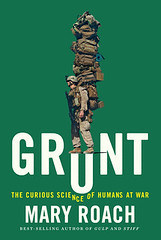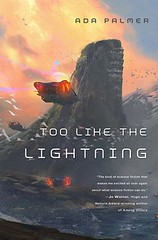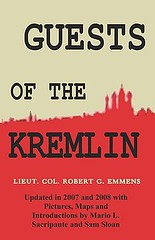“People tend to think of military science as strategy and weapons—fighting, bombing, advancing. All that I leave to the memoir writers and historians. I’m interested in the parts no one makes movies about—not the killing but the keeping alive.” — Mary Roach, Grunt: The Curious Science of Humans at War
 Grunt: The Curious Science of Humans at War
Grunt: The Curious Science of Humans at War
Mary Roach
![]()
As with other Mary Roach books I’ve read, I thoroughly enjoyed this one. And I know a bit about the subject matter—the military science of keeping soldiers, sailors, and airmen alive, healthy, and at their peak; in my case, aviation medicine and physiology. I flew fighters for the USAF, so I know all about altitude chambers, the infamous Nazi experiments of WWII our present-day cold water survival charts are based on, the improvements we’ve made over the years in ejection technology.
Mary Roach didn’t get into the aviation side of military science with this book but she did explore in detail such topics as military clothing, footwear, rations, armored vehicle technology, diarrhea and dysentery, the unique injury patterns associated with IEDS and other explosions, submarine escape systems, and sleep management—not often appreciated as critical subjects by anyone other than soldiers who have to perform in, and stay healthy in, extreme and dangerous environments. Her trademark humor is very much in evidence, and one simply cannot stop turning pages. In case you can’t tell, I love Mary Roach and will read anything she writes.
 Gold Fame Citrus
Gold Fame Citrus
Claire Vaye Watkins
![]()
The best book I ever read about water and the American Southwest was Marc Reisner’s nonfictional Cadillac Desert, which spawned several fictional treatments of waterless desert rat societies, usually set in the not-too-distant future. Paolo Bacigalupi, for example, has written some excellent stories on this theme: the short stories in Pump Six and the novel The Water Knife. So too has Hugh Howey (Dust). I’m partial to these stories, and to thinking about the future of the Southwest, because I live in Tucson, Arizona, right in the heart of it, and was a Mojav in Las Vegas before that.
So I know Claire Watkins’ landscape. I’m part of it and it is part of me. I was delighted to see her mention of Cadillac Desert in the acknowledgements. She not only knows the history of the region and its tenuous water supply, she’s intimate with its geography (I’ll be crushed if I find out she’s not a Mojav herself).
It’s her skill at characterization that elevates this novel to the ranks of serious reads. We think we know Ray and Luz after the introductory chapters. We’re not even close. Later we see Levi’s Armagosa colony and think we know what’s going on, but we’re seeing it through Luz’s eyes. Once we see it through Ray’s eyes, we realize we’ve been hoodwinked. And Ig? Enigmatic to the end.
Some chapters are realistically linear. Some are stream of consciousness. Some verge on poetry. Some, which appear dryly encyclopedic, turn out to illusory (reminding me of Borges, which is high praise indeed). Every page of Gold Fame Citrus pulls. Can it be true Claire Watkins was 30 when she wrote this?
 Too Like the Lightning (Terra Ignota #1)
Too Like the Lightning (Terra Ignota #1)
Ada Palmer
![]()
I write book reviews and post them to my blog, Daily Kos, and Goodreads. Perhaps because of this, publishers sometimes offer to send me pre-publication books in exchange for reviews. Tor offered me a pre-release copy of Too Like the Lightning and I agreed to read and review it.
Ada Palmer’s concept of a 25th century world is an interesting one, and I expect most readers will find plenty of food for thought here … if they can get past the narrative hurdles she places in their way. I didn’t object to the flowery Age of Enlightenment writing style she gives to her narrator, Mycroft, but I found other aspects annoying and frustrating, and struggled to finish the novel.
Quickly back to the concept, though you can learn just as much about it from the publisher’s blurb: 400-plus years from now, the availability of hypersonic transport that can move individual citizens anywhere they want to go, and get them there in a hour or so, has made nation-states obsolete. People live in multi-racial clusters of of like-minded friends and associates, and these groups, or i-bashos, manage the multifarious aspects of a nearly-utopian, post-monetary global society. Into which various potentially destructive forces are introduced, and thereby you have a story.
Here’s my big problem: the author’s use of neutered and gendered pronouns. In Palmer’s future world the inhabitants have desexualized language by using generic or neutral pronouns (them/their) to refer to one another in formal speech. They still use gendered pronouns (he/she) in informal speech, intimate settings, and their own inner thoughts, but sometimes not even then, and there were characters I couldn’t identify as male or female. The conceit rings false, and moreover is terribly confusing.
The narrator, Mycroft, is inconsistent in their (to use Ada Palmer pronouns) use of pronouns: referring to characters with neutered pronouns but occasionally identifying them as male or female, never identifying other characters’ genders at all, sometimes even using she/her for individuals later identified as male, or he/him for females. Why? I’ll let Mycroft take a stab at that:
Art thou certain, Mycroft, that thou appliest thine own formula correctly? Here thou describest silks and embroidery, curls and ribbons, pleats and skirting, and appliest ‘he’? I know the name Dominic Seneschal, and know too there are breasts beneath that taut waistcoat, that the thigh and pelvis which the coat’s high cut displays are very much a woman’s. …
Innocent reader, I take comfort in your confusion, for it is a sign of healthy days if you are illiterate in the signal-flags of segregation humanity has worked so hard to leave behind. In certain centuries these high, tight boots, these pleats and pony tail might indeed have coded female, but I warned you, reader, that it was the Eigthteenth Century which forced this change upon us, and here it stands before you.
There. Get it? Are you satisfied? Well, I didn’t get it, and I am not satisfied. Unless Ada Palmer’s actual point is that no matter how sophisticated we become we will forever be obsessed with sex and gender, I’m unsure what she’s saying.
Less annoying but still intrusive: the people of 2454, whatever their gender, are multi-lingual. Although Mycroft mercifully records their conversations in English, quotations are bracketed in different ways to indicate which language is being spoken ( “…” “…” «…» ‹…› „…” »…«?…?) Let us be thankful Thomas Pynchon never developed a quotation mark fetish. He’d have been insufferable.
To my mind, Ada Palmer’s linguistic and typographical playfulness got in the way of a good story. I enjoyed the concept but was frustrated in the reading.
 Guests of the Kremlin
Guests of the Kremlin
Robert G. Emmens
![]()
Robert Emmens’ B-25 ran low on fuel before any of the other Doolittle Raid aircraft, and, after the Raiders bombed Tokyo and headed for China, he and his crew broke off to fly to the nearest “friendly” airfield, which happened to be outside Vladivostok in the USSR. The USSR not being at war with Japan, the five American airmen were interned for a little over a year, eventually managing to escape.
Guests of the Kremlin is an interesting tale about a little-known side chapter to the famous Doolittle Raid, filled with insights into life in the Soviet Union during WWII. I read it in bits and pieces, putting it aside when library books I had on order came in, since those had due dates and this one didn’t.
The introductions by Sacripante and Sloan, added in 2007, are sloppily written and filled with factual errors. That is not the case with Emmens’ memoir itself: written after WWII and originally published in 1949, it is lucid and well-written. I point this out in case you find a copy and are tempted to quit reading before you finish the introductions. Press on, the tale itself is well-told.
Guests of the Kremlin seemed a straightforward account of Emmens’ crews’ internment: the living conditions and domestic arrangements at the four different locations where they were held; how the Russian officers detailed to supervise and feed them behaved, as well as the Russian women who cooked and cleaned for them; their frustrations in trying to contact American embassy personnel; their attempts to learn and speak Russian; their nightly newscast sessions, trying to deduce what was really happening in the war from misleading Moscow Radio broadcasts … all very interesting.
The end of the book, however, made me reassess it in its entirety. In the last few pages, Emmens recounts their escape, with the aid of a smuggler, from a border town in Turkmenistan into Persia, suddenly stopping at the point where they contact the British consulate in the first city they reach. Not a word about how the British got them out of Persia, much of which was under Russian control. But that is not what bothered me. What bothered me was the book’s final paragraph:
This is the Russia we saw. This is the Russia which exists today. That these descriptive lines should ever be used to picture life in these United States is unthinkable. And yet, communism, like a malignant scab on the skin of the world, is spreading north, south, east, and west. FIGHT IT!
Emmens’ memoir was published in 1949, after the USSR had transitioned, in the American public’s mind, from a wartime ally to an existential enemy. The final paragraph is uncharacteristically bombastic, utterly unlike the rest of Emmens’ narrative, an undiluted dose of early Cold War propaganda. I suspect Emmens’ end message was part and parcel of the post-war years.
The memoir’s abrupt ending, and especially the final paragraph, prompted me to think about Emmens’ earlier descriptions of the towns and the people in the different locations where they were kept during their internment. Looking back, Emmens never failed to describe cities, towns, and villages as run down, crumbling, and dismal. Whenever he described Russians, he invariably depicted them as sullen, filthy, starved, clothed in rags, and barefoot. This was in sharp contrast to his descriptions of his keepers, who were decently dressed and reasonably well fed … I should have seen the propagandistic ending coming a mile off.
 Beacon 23: The Complete Novel (Beacon 23 #1-5)
Beacon 23: The Complete Novel (Beacon 23 #1-5)
Hugh Howey
![]()
Sorry to say I was disappointed in this one. Like other Hugh Howey “novels,” this is a collection of previously published serial installments.
I really got into Howey’s earlier Sand and Silo story collections. I think the difference was that the worlds Howey set up in Sand and Silo were more detailed and believable, as outlandish as they were.
I never felt the space lighthouse in Beacon 23 was anything more than a metaphor. The lighthouse operator’s interior monologues got old in a hurry. The science fiction felt hastily called in (gravity panels you can turn on or off with a switch; space cargo ships moving at 20 times light speed colliding with asteroids and leaving salvagable wreckage behind … gimme a break).
Overall this is second rate stuff, no comparison to Howey’s earlier work.
Blast from the Past (and I Do Mean Blast)
 Spy (Alexander Hawke #4)
Spy (Alexander Hawke #4)
Ted Bell
![]()
A dear friend—super-smart, a voracious reader who is a member of Amazon’s book reviewing staff—told me I should read something by Ted Bell. Perhaps I picked the wrong novel. Or maybe she had a different Ted Bell in mind. The Ted Bell who wrote this potboiler is a third-rate Clive Cussler, his hero Alex Hawke even less dimensional than Cussler’s Dirk Pitt. When cars speed away in this novel, they fishtail under acceleration. So too do motorcycles, boats, airplanes: all vehicles must fishtail! The plot relies on a familiar racist right-wing conceit: the “reconquista.” Dirty brown Mexicans are invading our country, hoping to reconquer territory lost in the Mexican-American War. This dire warning (if only someone would listen!) is repeated at least 20 times throughout the novel, almost verbatim, by different characterss. There’s an abundance of military techno-babble as well, all of it firmly in the realm of fantasy. Clearly, Ted Bell is unfamiliar with the realities of warfare, where things don’t ever work as advertised. Nasty stuff. Sloppily written nasty stuff.